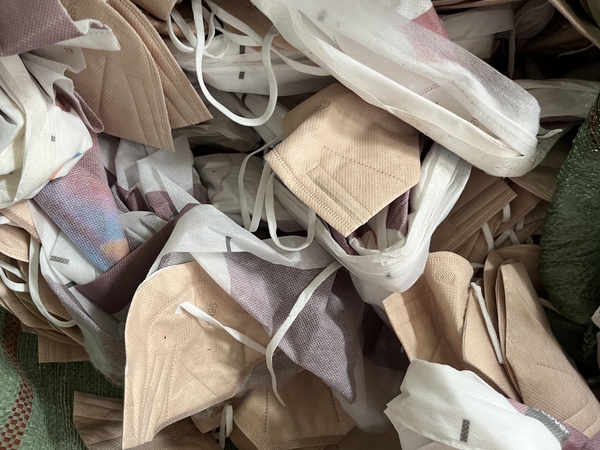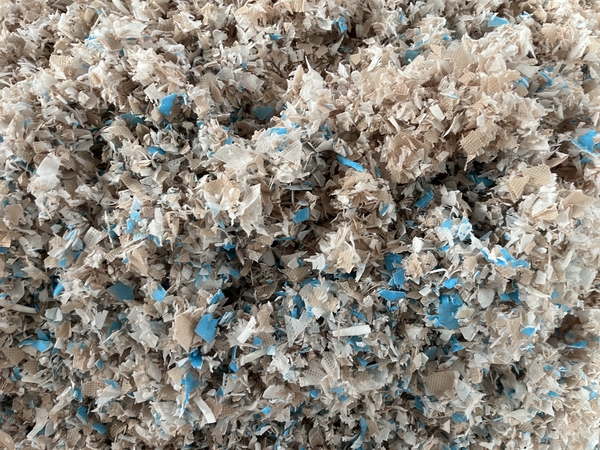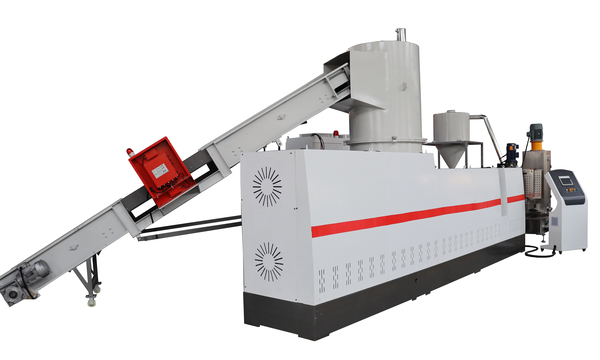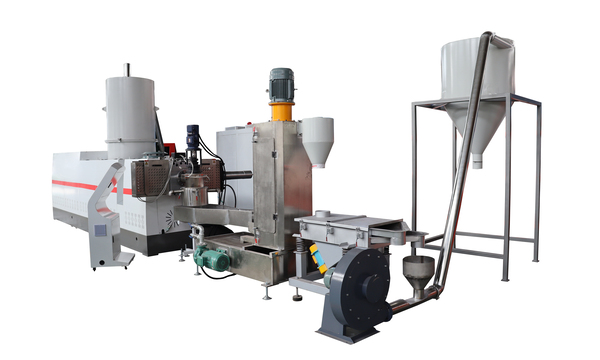Copyright © 2019-2022 Retech Machine. All rights Reserved.
According to estimates by the World Health Organization, in 2020, at least 129 billion masks were produced globally.
Where did these used masks go? They were discarded by people on the side of the road, left in fitting rooms and restaurants, thrown into household waste, and even washed into the sea.
At the end of February 2020, oceanographer Gary Stokes picked up about 70 masks washed ashore on a 100-meter-long beach while conducting a routine marine litter survey in Hong Kong's Soko Islands. It's only been 6 weeks since the mass use of masks began. Under the washing of seawater, the color of these masks began to darken. Before it was too late to consider whether there was still viruses remaining on it, Stokes strung these masks on a long stick, which soon covered a stick. In the days that followed, Stokes and his team were able to collect an average of a dozen "fresh" masks on the beach each week.

Normally, only 15% of the total ocean litter washes up on the beach, so around this tiny sample beach, around 70 masks drift into the sea like ghosts every week and then disappear.
The French marine protection organization "Ocean Cleanup" also found mask waste on the French Riviera in southeastern France. The Cote d'Azur is a famous resort in southeastern France. The sea water is clear and transparent in all seasons, like a blue ribbon in the Mediterranean Sea. The famous movie cities of Cannes and Nice are dotted on it like pearls. However, in May 2020, Clean Ocean also recovered more than a dozen masks and rubber gloves at the Côte d'Azur marine monitoring point, said Joffrey Pelletier, a member of the organization, "considering that France has just ordered 2 billion Just a mask, there will soon be more masks in the Mediterranean than jellyfish."
In the United Kingdom, which is separated by a sea from France, photographer Dan Giannopoulos has been honestly staying at his home in the suburbs of Nottingham during the epidemic lockdown. After a few weeks, he finally plans to take a walk in the nearby neighborhood. Let's get some air, and move the camera that is collecting dust in the corner by the way. But this time he went out and found that "epidemic garbage" could hardly be avoided in the camera. Masks and rubber gloves are always popping up in flower beds, scattered around untied garbage bags, and stuck in barbed wire and bushes. He took pictures of the masks and gloves one by one, taking a total of 300 photos in a neighborhood of less than a mile.
During the epidemic, in order to stop the spread of the virus, it is difficult to calculate how many masks have been hastily produced around the world. According to the statistics of China Customs, from March 1 to April 30, 2020, the number of masks inspected and released for export in China reached 27.8 billion.

The main material of disposable masks is melt-blown cloth. Compared with other materials, the polypropylene fibers that make up the melt-blown cloth are extremely thin in diameter, only 1 to 5 microns. These polypropylene fibers have many pores, a fluffy structure, and a large adsorption surface area, which can well isolate impurities and filter viruses that may float in the air.
Polypropylene also has a more common name: plastic. Polypropylene will gradually age and decompose over time, becoming smaller and smaller particles, until it becomes microplastics with small diameters that are difficult to filter and separate. These microplastics decomposed by masks washed into the sea will exist in the sea for a long time in the next 300-400 years, enter the food chain with the feeding of fish, enter the soil with the water cycle, and finally enter our body. What's more dangerous is that masks are directly made of ultra-fine plastic fibers. Compared with common plastic waste such as plastic bags and takeaway boxes, masks may release microplastics faster and more during the shredding process.
For wildlife, the existence of masks is a huge threat in itself. Since March 2020, the RSPCA has rescued more than 900 animals tangled in litter off the UK coast, most of them seabirds tangled in the ear strings of masks. If these seabirds were lucky enough to be found by humans before they were trapped in their wings or legs and starved to death, their legs and joints would have been swollen and out of shape.
Masks that drift into the ocean have another chemical danger. The characteristics of masks that are easy to absorb impurities are a boon for humans, but in the ocean, this characteristic allows masks to continuously accumulate toxic substances. According to a study by Bahir Dar University, not only extremely fine plastic particles were separated from common meltblown cloth masks on the market, but also heavy metals such as lead, cadmium, antimony, and copper were detected in the leachate. Stokes explained, "The masks will continue to absorb and accumulate these toxic substances in the ocean, and they will eventually be eaten by marine organisms as jellyfish." These marine organisms may be blocked by the mask and starve to death.
Faced with the sudden increase in masks, most countries in the world were not prepared.
In Germany, where waste classification is strictly enforced, civilian masks are classified as "other waste" and eventually landfilled or incinerated in waste treatment plants without special treatment measures. But throughout 2020, the German government is calling on citizens to use multi-layer cotton masks that can be washed and disinfected to avoid putting too much pressure on the garbage disposal system.
In Japan, masks used in hospitals and pharmacies are classified as medical hazardous waste and require centralized disposal, while household masks are classified as ordinary combustible waste. In order to reduce the waste of masks on the streets, Japan once sealed up the trash cans near the station, but the effect was not good, and the pressure of cleaning masks was transferred to the cleaners. In July 2020, the Japan Broadcasting Association reported that cleaners near Kanagawa were able to pick up 15 masks that floated on the coast every day. Disposing of the mask waste made the cleaners feel a lot of pressure and constantly worried that they might have been exposed to the virus.
"There are three principles of garbage disposal, namely reduction, recycling, and harmlessness. Mask 'garbage' is very difficult in these three aspects." Liu Yonglong, founder of Shanghai Rendu Marine Public Welfare Development Center, said, "In the face of the epidemic, People's demand for masks will not decrease in the short term, and it is difficult to reduce the amount. In addition, mask waste has hygiene problems and is difficult to recycle. At present, there is no harmless technology that can decompose masks, and it can only be concentrated in landfill or Incineration, therefore, should try to avoid masks scattered in the wild."
The dilemma caused by mask waste has not yet fully emerged, but it may be time to think about how to deal with the extra 480,000 tons of discarded masks.

As an expert in the field of waste plastic recycling, RETECH Machinery continues to pay attention to the recycling and reuse of waste masks. By studying the characteristics of PP materials in masks and the metals, earrings, and other materials contained in masks, RETECH has designed a new one-stop used mask recycling granulation line.
The metal in the mask is mainly in the bridge of the nose. How to effectively remove the metal in the bridge of the nose and efficiently separate it, thereby reducing the pressure on the granulation equipment, is the key to the entire mask recycling system. The RETECH team has continuously adjusted and improved the plan. In the end, the metal and earrings were successfully separated to the maximum extent to ensure the efficient recovery of the PP mask recycling machine.
According to the characteristics of the meltblown cloth in the mask, we can choose two granulation methods: strip granulation and water ring granulation for customers to choose. The integrated crushing, compacting and the granulating machine is the best model for recycling masks.
At present, our PP mask recycling equipment solution has been successfully implemented in Australia and other customer factories.
